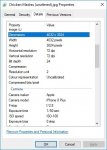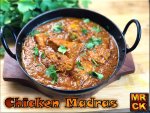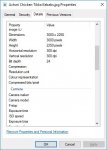Hello,
I have a problem which I need expert help with - regarding Word, Photos, PDF, and RGB / CSYV colour spaces.
As a complete publishing novice, but with reasonably good technical knowledge of windows, I’ve dipped my toe into the world of self-publishing, and have recently published a Kindle eBook on Indian cooking. I produced the book in Microsoft Word and used Amazon’s upload converter to get it in the final kindle format. All good so far.
I had always planned to follow the eBook up with a paperback version, and I had naively assumed that getting the Word doc formatted up nicely then exporting to PDF would be all that a potential printer would need to produce a professional looking book.
Having met with a couple of printers recently, I was very alarmed to learn about the difference in the way photos appear when printed versus viewed on screen. The printers stressed they need a pdf file in CMYK colour space, and that any content originating from Word would always have been created as RGB.
With over 60 high quality photos of curry in the word document, I need to know the optimal way to end up with a PDF file suitable for a good quality print. It’s further complicated that I originally edited each photo in PowerPoint to add a fancy graphic caption and an embossed border, before saving as JPG. By the way, loss of resolution wasn’t an issue for me because the kindle ebook needed to have smaller size photos to save costs from Amazon.
Bear with me. I DO have the original JPG photos, which were originally taken with my iPhone 8 Plus, but of course they do not have the fancy font captions or the embossing (no big problem - I can work around that if I have to). Windows File Properties (detail tab) inform me that the original images are have ‘uncalibrated’ Colour representation (I assume this is a good thing).
So, I’ve been wracking my brain about this, and even started a trial of Adobe InDesign to evaluate how much work would be needed to completely rebuild the book. My conclusion is that the learning curve would be too steep and painful, not to mention expensive. I also do not want to spend hundreds of pounds paying a professional to sort it all out.
In conclusion, my question. HELLLPPPP... I want to keep editing the book in Word if possible as I’m familiar with it., but I need the final print-ready PDF to look as good as it does on a screen (CMYK colour space ?).
I stress that I’ve only starting learning about the world of physical printing in the last week or two, so please bear that in mind in any replies.
Thanks in advance, during, and long after.
Richard (Misty Ricardo’s Curry Kitchen)
P.s. My kindle ebook content can be previewed using the supplied url, if it helps.
I have a problem which I need expert help with - regarding Word, Photos, PDF, and RGB / CSYV colour spaces.
As a complete publishing novice, but with reasonably good technical knowledge of windows, I’ve dipped my toe into the world of self-publishing, and have recently published a Kindle eBook on Indian cooking. I produced the book in Microsoft Word and used Amazon’s upload converter to get it in the final kindle format. All good so far.
I had always planned to follow the eBook up with a paperback version, and I had naively assumed that getting the Word doc formatted up nicely then exporting to PDF would be all that a potential printer would need to produce a professional looking book.
Having met with a couple of printers recently, I was very alarmed to learn about the difference in the way photos appear when printed versus viewed on screen. The printers stressed they need a pdf file in CMYK colour space, and that any content originating from Word would always have been created as RGB.
With over 60 high quality photos of curry in the word document, I need to know the optimal way to end up with a PDF file suitable for a good quality print. It’s further complicated that I originally edited each photo in PowerPoint to add a fancy graphic caption and an embossed border, before saving as JPG. By the way, loss of resolution wasn’t an issue for me because the kindle ebook needed to have smaller size photos to save costs from Amazon.
Bear with me. I DO have the original JPG photos, which were originally taken with my iPhone 8 Plus, but of course they do not have the fancy font captions or the embossing (no big problem - I can work around that if I have to). Windows File Properties (detail tab) inform me that the original images are have ‘uncalibrated’ Colour representation (I assume this is a good thing).
So, I’ve been wracking my brain about this, and even started a trial of Adobe InDesign to evaluate how much work would be needed to completely rebuild the book. My conclusion is that the learning curve would be too steep and painful, not to mention expensive. I also do not want to spend hundreds of pounds paying a professional to sort it all out.
In conclusion, my question. HELLLPPPP... I want to keep editing the book in Word if possible as I’m familiar with it., but I need the final print-ready PDF to look as good as it does on a screen (CMYK colour space ?).
I stress that I’ve only starting learning about the world of physical printing in the last week or two, so please bear that in mind in any replies.
Thanks in advance, during, and long after.
Richard (Misty Ricardo’s Curry Kitchen)
P.s. My kindle ebook content can be previewed using the supplied url, if it helps.















